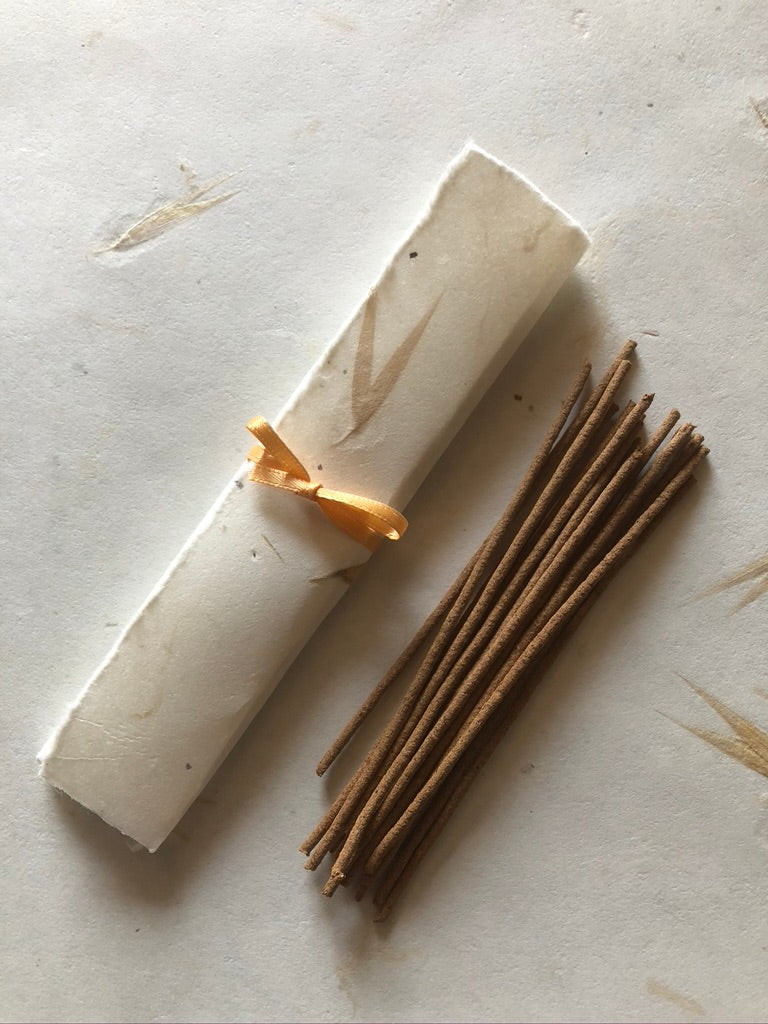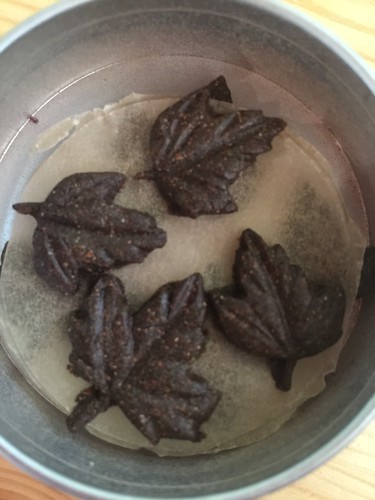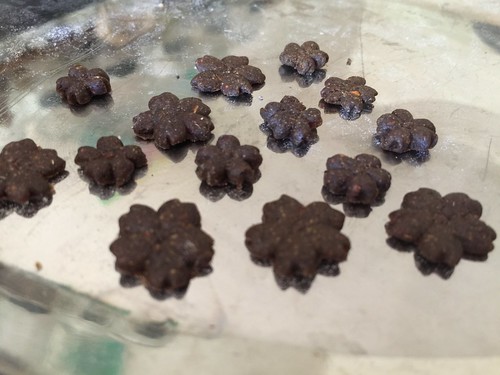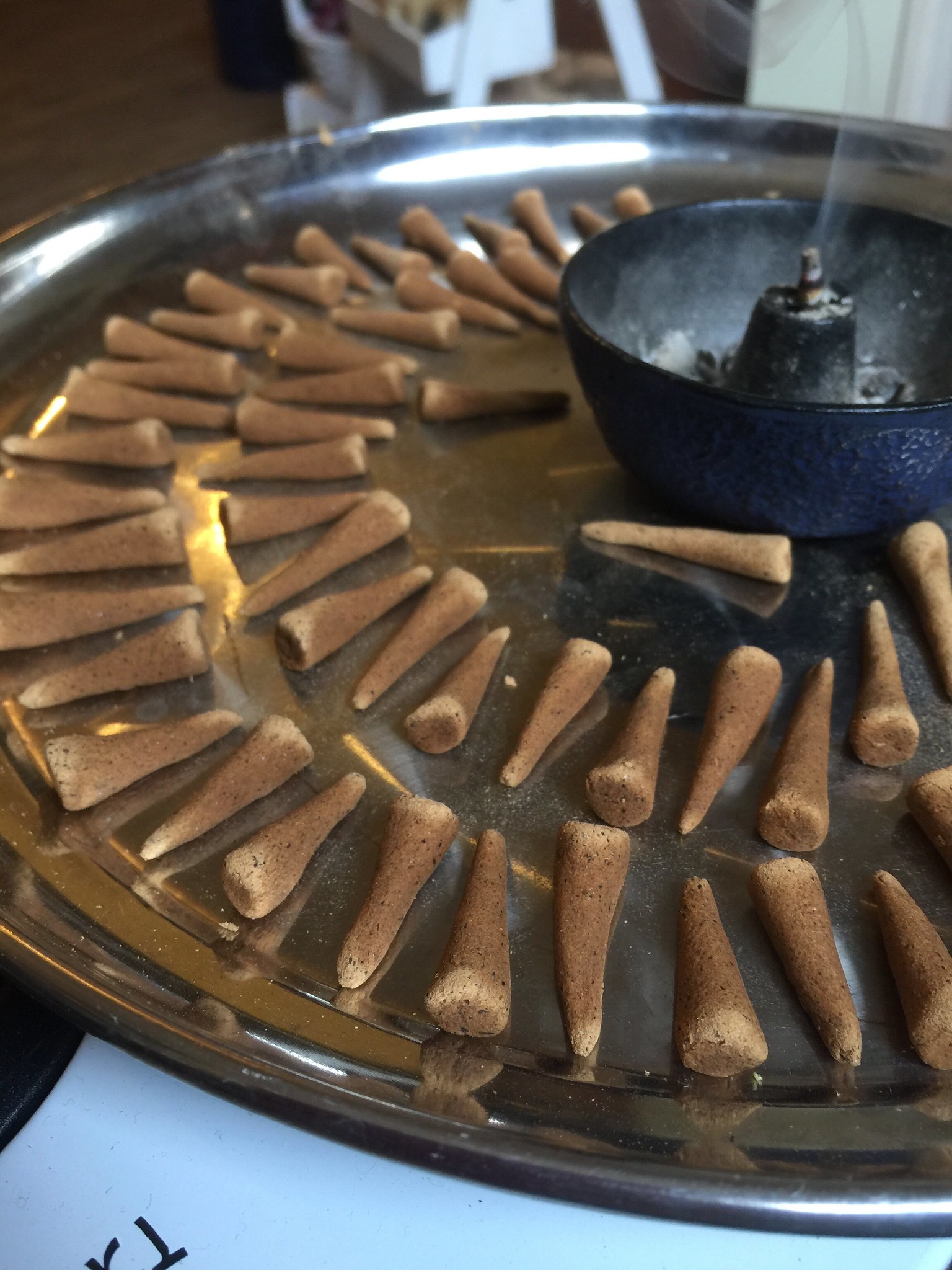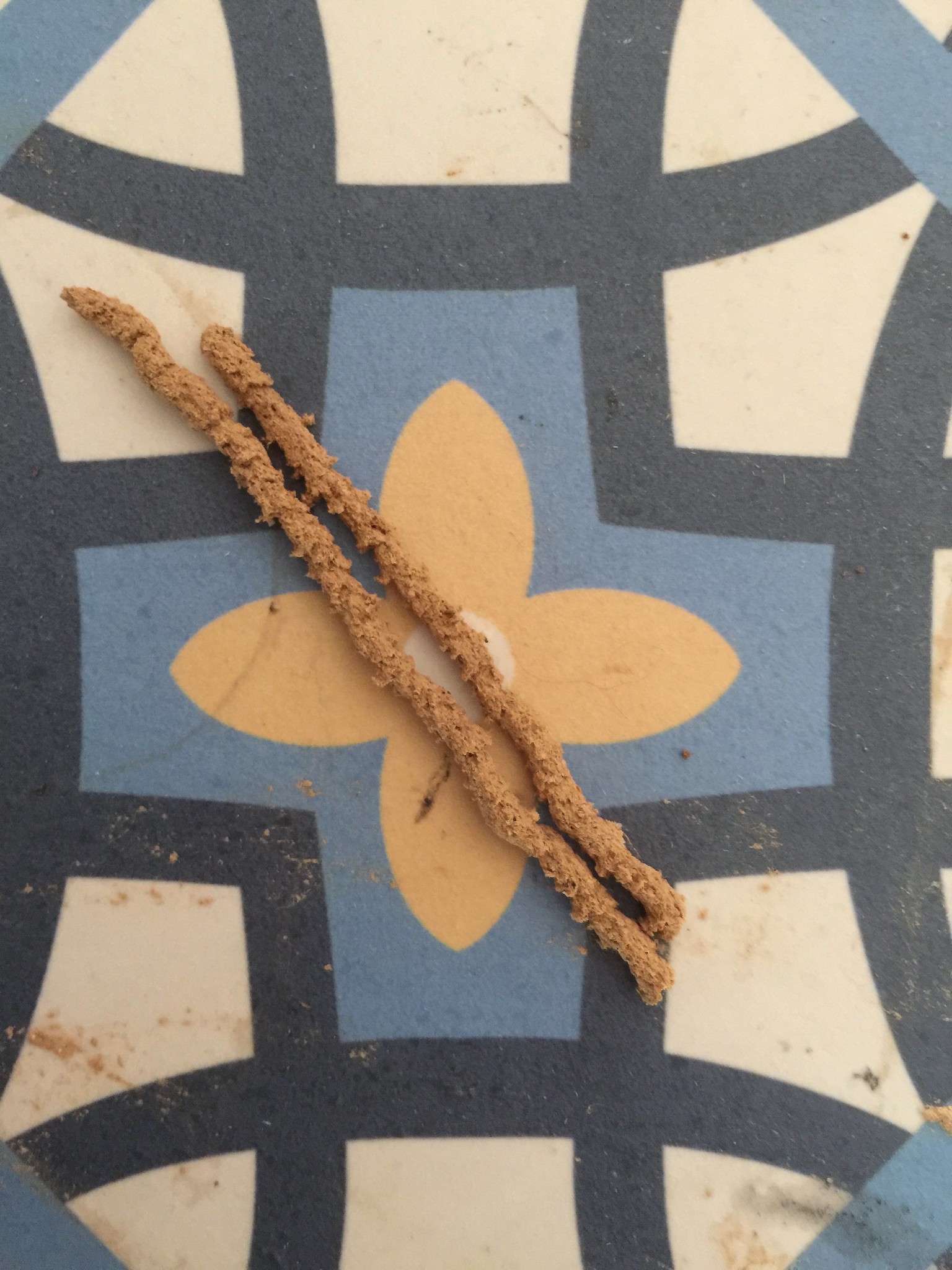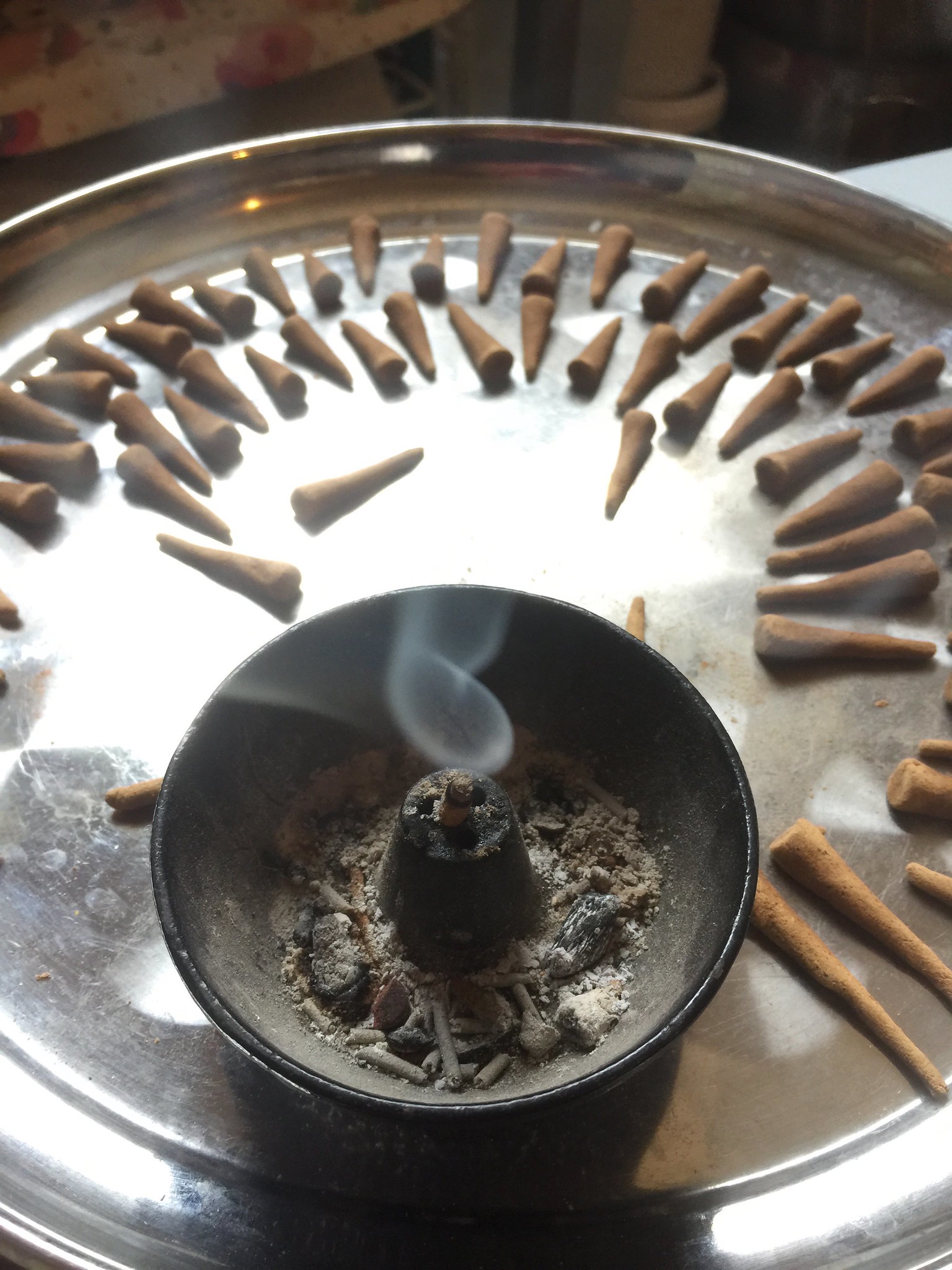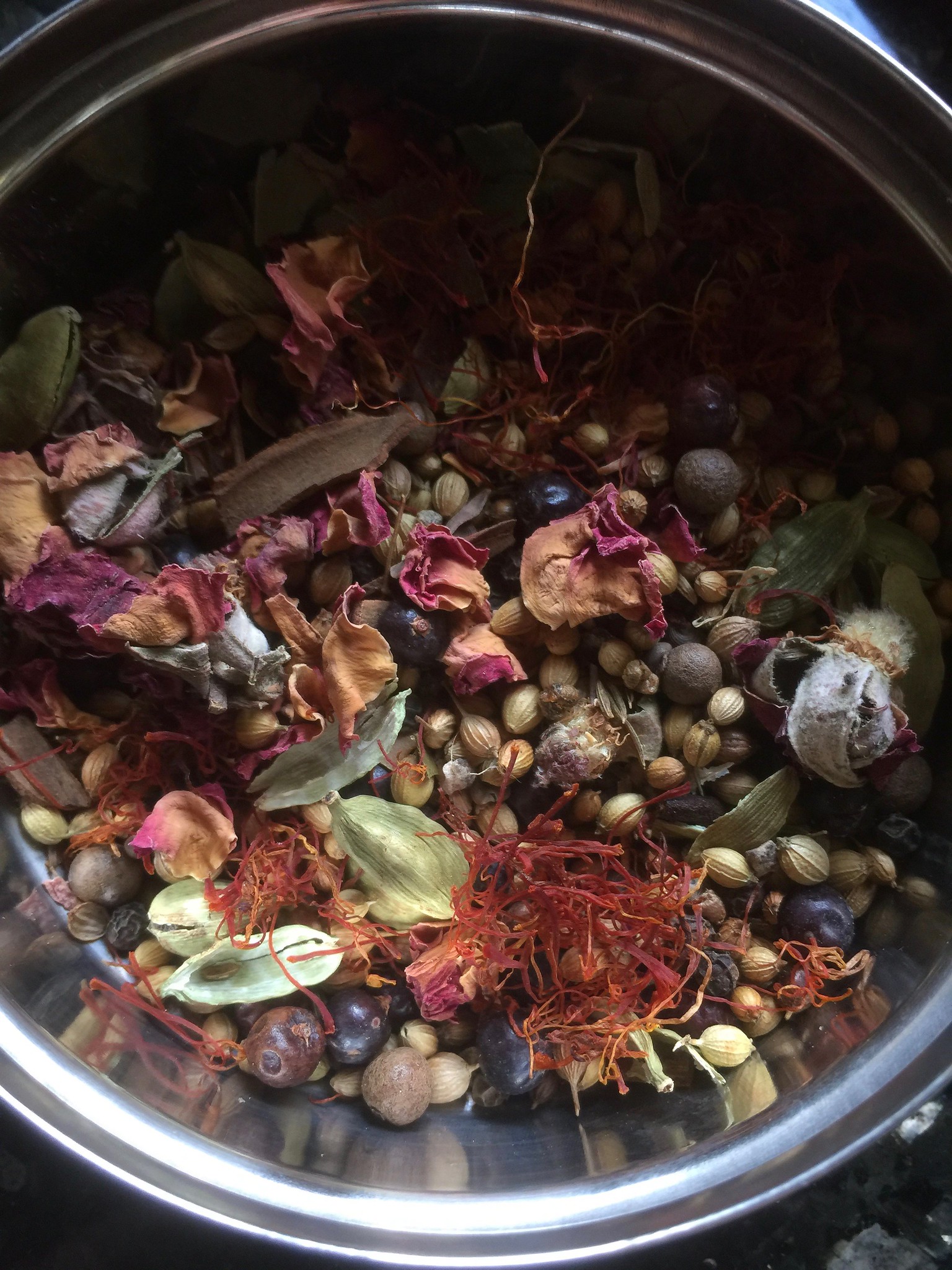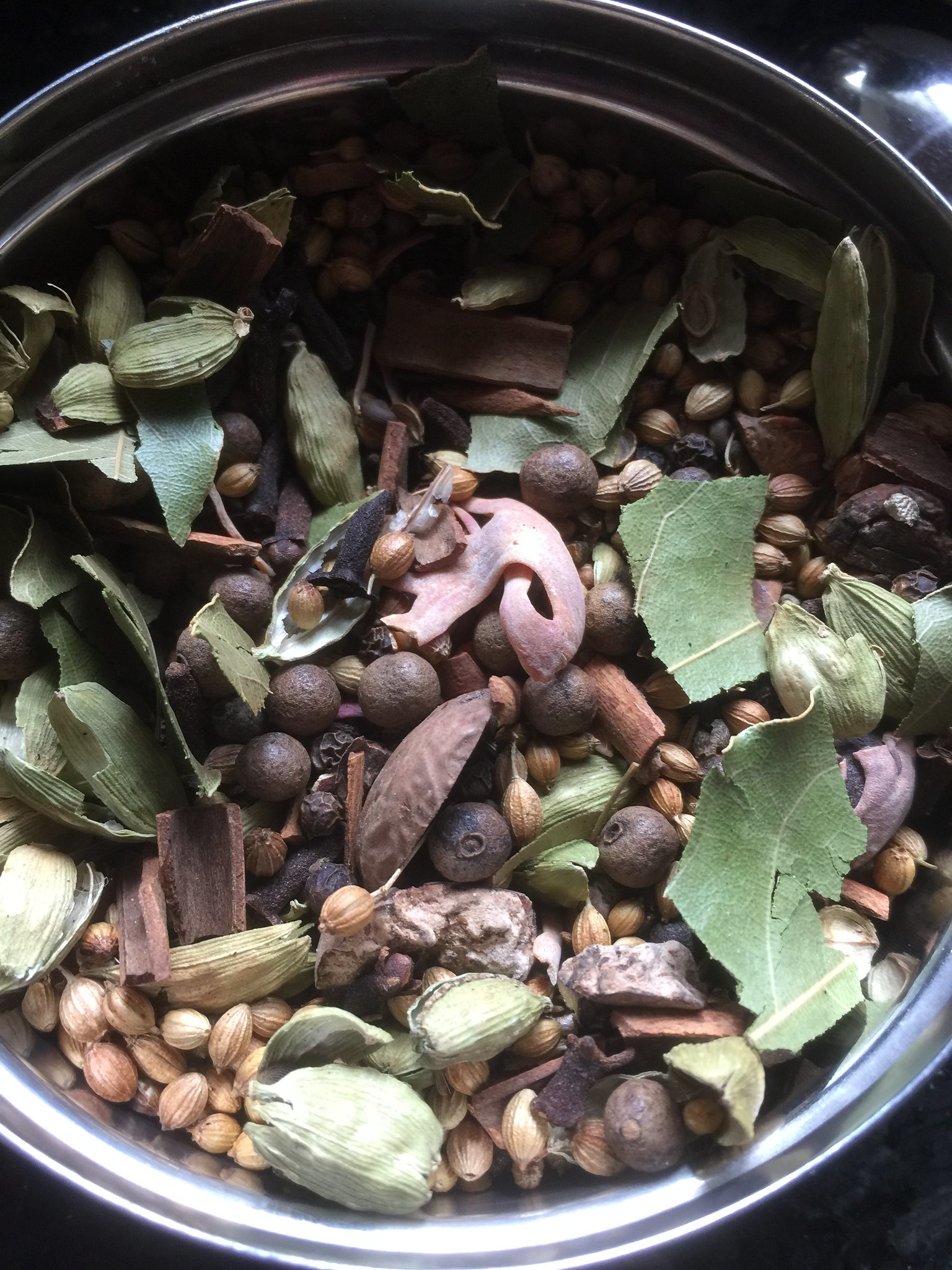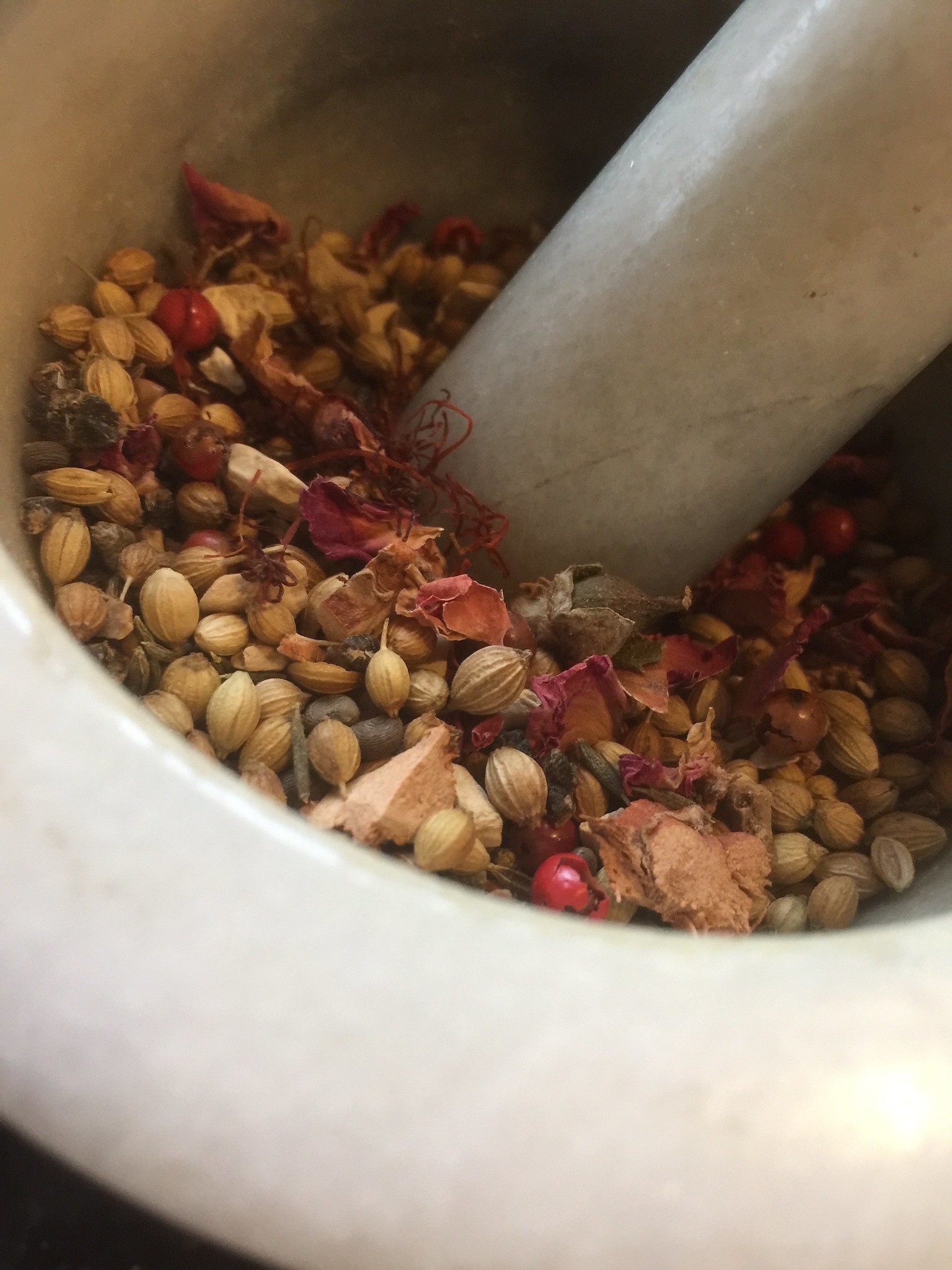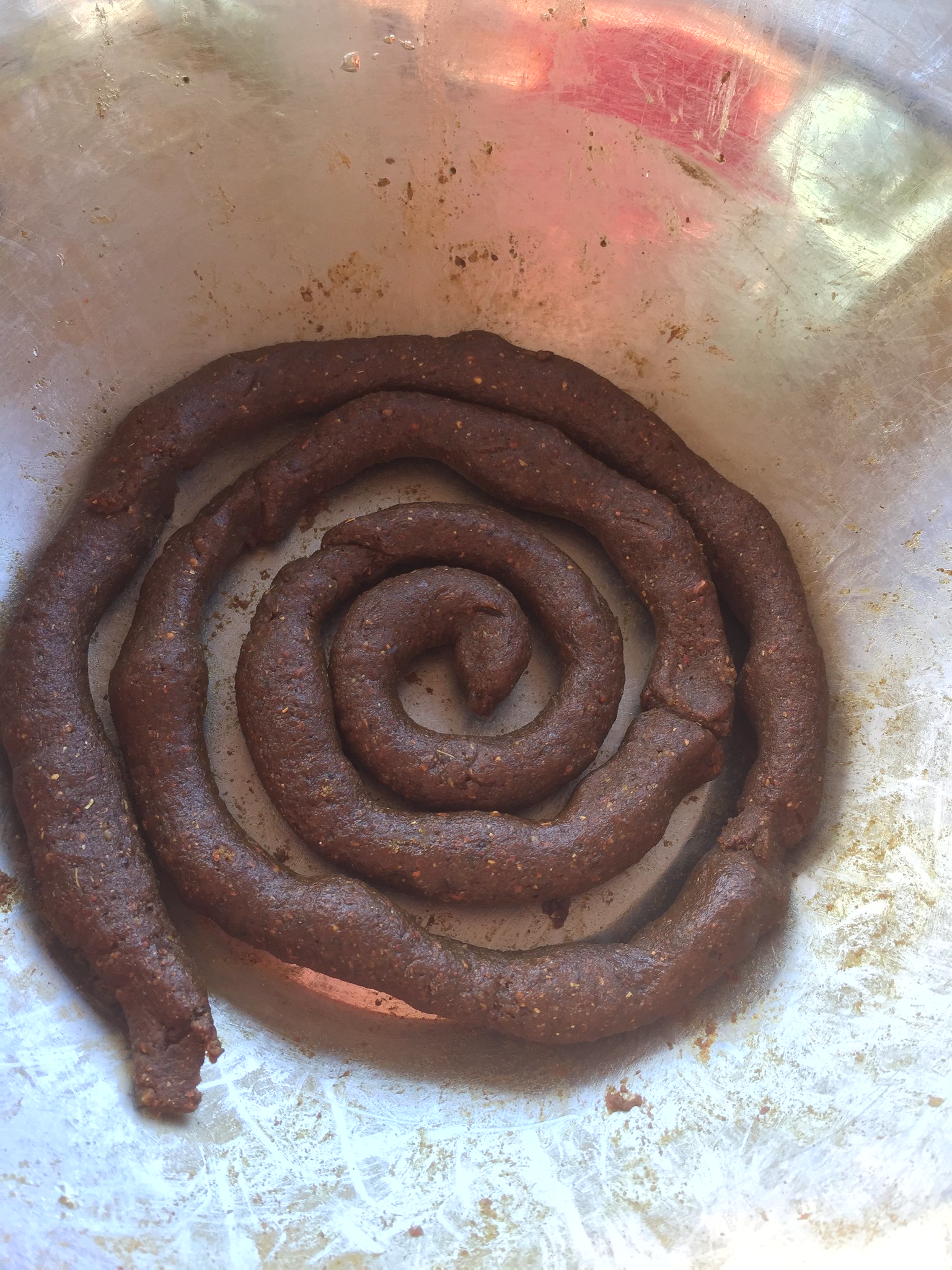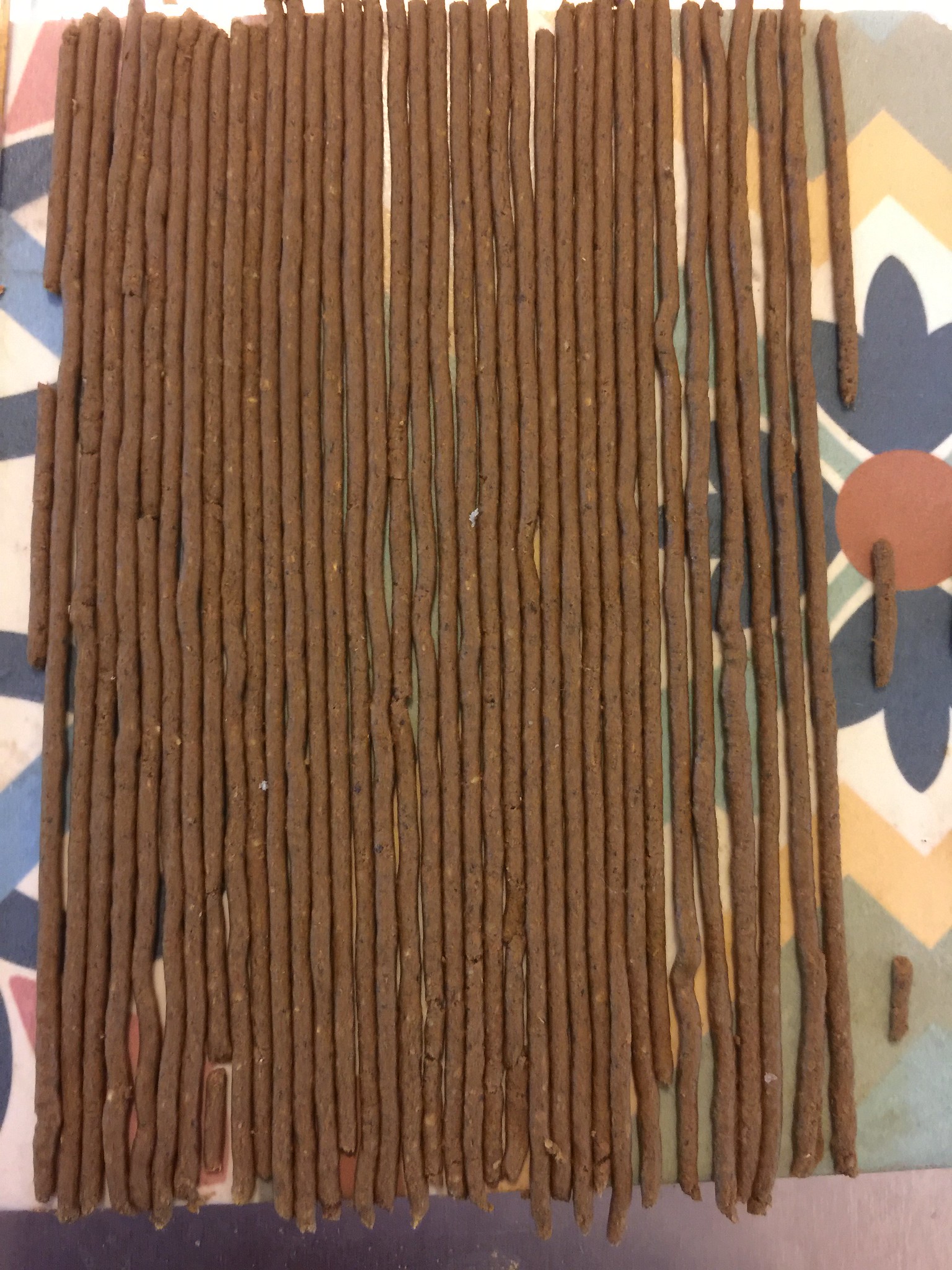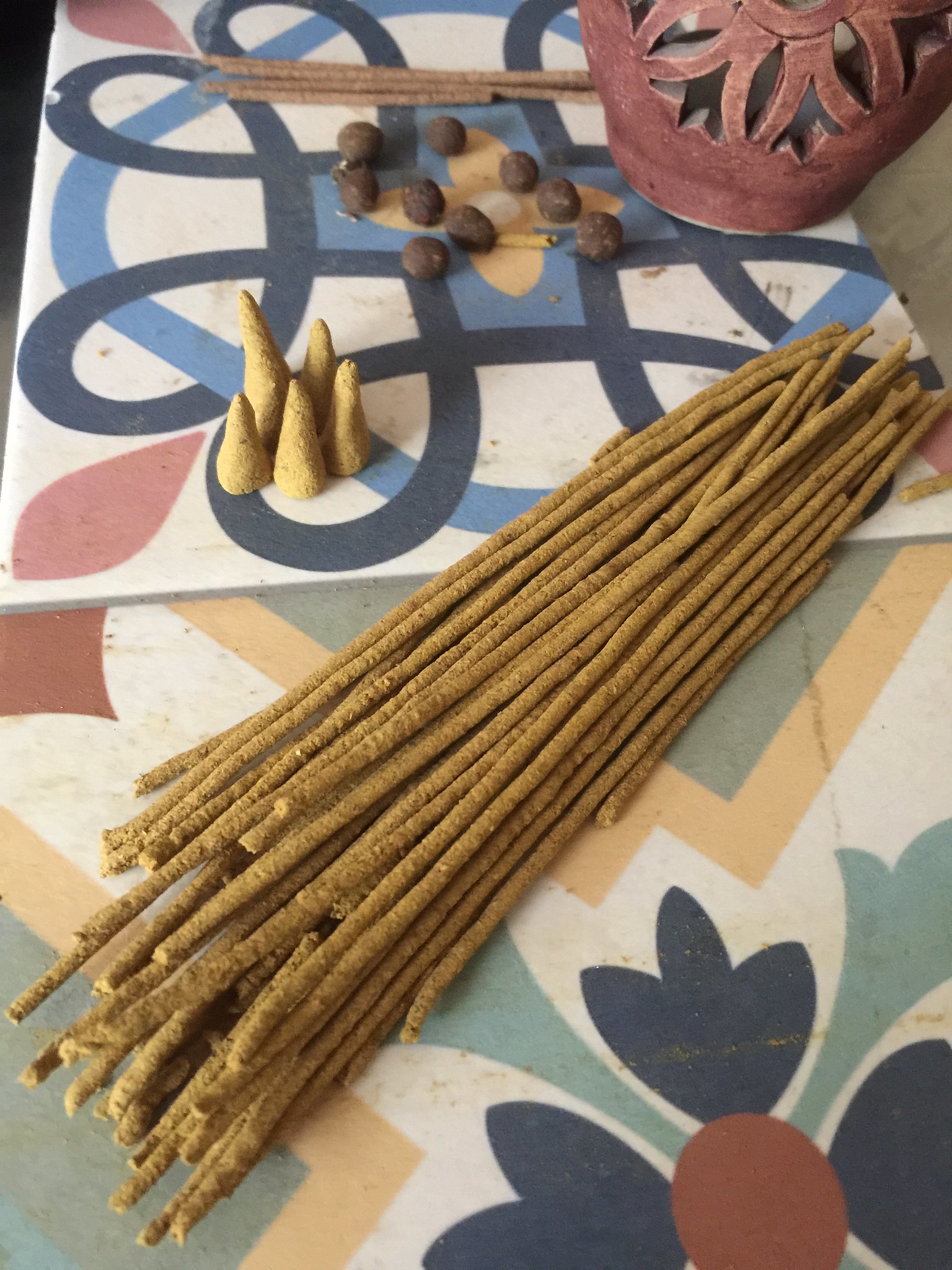Ancestral Feast Incense
Ancestral Feast Incense was created originally as a Five-Copals blend. The intent behind it was to have a special incense to burn to honour our ancestors. I have first used it in summer of 2019, when my grandma was struggling with death, and I was sure I am visiting her for the last time before she enters the gate to the other side. If you've ever been near a dying person, you may not be surprised to hear that she was communing with all her beloved that passed before her - her mother, father, and grandmother, and also her late husband (my grandfather) and her soul-mate that she was able to happily spend her later years with. I burnt this incense then to soothe her soul, and also burnt this on her funeral and continue to do this whenever I want to honour my ancestors, a practice I started a few years ago, and which I fell very important especially now after her passing.
Why copal you may ask? The word comes from copalii in the Nauhatl language (an Uto-Atzecan tongue), which simply means incense!
The smoke of copal of Central and South America (which comes from several different species, which I will get into in a bit) was considered the blood of the trees and food for the Gods, and also used in rituals and ceremonies to feed the soul of the deceased, and also used as a medicine to this day during sweatlodge ceremonies, where it is placed on the hot rocks within the lodge.
 In a ceremonial well in Chichén Itzá, Copal pieces painted turquoise, and sometimes embedded with jade - supposedly a reference for the jade pieces that were placed in the mouths of the dead, to nourish them on their journey to the underworld (as jade was a symbol for the maise that was the most staple food in this part of the world). Additionally, among archeological findings in Lake Chapala and Nevado de Toluca were pieces of copal resin that were shaped into cobs of corn, or wrapped in corn husks like tamales, a custom that remained intact even after the Spanish conquest.
In a ceremonial well in Chichén Itzá, Copal pieces painted turquoise, and sometimes embedded with jade - supposedly a reference for the jade pieces that were placed in the mouths of the dead, to nourish them on their journey to the underworld (as jade was a symbol for the maise that was the most staple food in this part of the world). Additionally, among archeological findings in Lake Chapala and Nevado de Toluca were pieces of copal resin that were shaped into cobs of corn, or wrapped in corn husks like tamales, a custom that remained intact even after the Spanish conquest.
So what is copal, then, and which plants does it come from? Botanically speaking, many resins other than frankincense that are light in colour, often are named copal. It comes from a variety of genus, primarily Bursera, and also Pinus and Agathis. In North America, we find Mayan Copal from Pinus contorta, that grows in the USA and produces a brittle, light brown and beige resin; while White Copal (Bursera jorullense), from Mexico, which is more of a clear, light yellow and sticky resin. Bursera is related to Palo Santo (Bursera graveolens), as well as to Black, White and Gold Copal from the Philippines are all produced from the same species - Agathis Dammara. From Africa there is Angola Copal (Copaifera demusii), and Zanzibar Copal or Amber Tree (Hymenaea verrucosa), which was used for wood and picture varnish. Most of the African copal is subfossil, meaning it is found a few meters deep in the earth below the trees it originates from. Subfossil copals also come from various other species found all over the world: New Zealand (Agathis australis), Japan, Madagascar and in South America in the Dominican Republic and Columbia.
This new batch of incense is a little different (with sixth kind of copal added: Angola Copal), thus making it an incense blend that has resins from 4 continents: North and South America, Asia and Africa. The base is also more complex and balanced with this blend, and I'm very happy with it.

I was able to make a larger batch than my original one, and roll some into cones, and others make into incense sticks. This is the first time I'm selling my incense sticks online, after much practice and although they are far from being perfect in shape - they are handmade, authentic and beautiful. I truly hope they will bring you the healing and connection that you are seeking with your own spirit and that of your ancestors.
To burn incense cones: Place the cone on a heat-proof dish or on a surface that you won't mind scorching (for example: a coin placed on top of a ceramic plate or tile; a ceramic bowl filled with sand, etc.), and away from any flammable materials, light the tip and blow off the flame. Allow to burn off completely.
To burn the incense sticks: Place the lit stick (light the tip and then blow out the flame) on a bowl full of ash (preferably rice ash). This will enable the stick to burn without any bits left off. If you have a designated incense dish with a hole you may also use that. It will leave a tiny bit of incense unused though.


